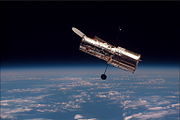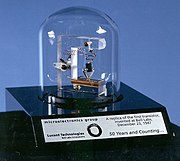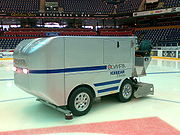

| 送交者: 宝马哥[巡抚★★] 于 2019-04-21 17:13 已读 673 次 1 赞 | 宝马哥的个人频道 |
1946 Space observatory 6park.com
6park.com
The Hubble Space Telescope 6park.comA space observatory is any instrument, such as a telescope, in outer space which is used for observation of distant planets, galaxies, and other outer space objects. In 1946, American theoretical astrophysicist Lyman Spitzer was proposed the idea of a telescope in outer space, a decade before the Soviet Union launched the first artificial satellite, Sputnik into orbit. However, German scientist Hermann Oberth had first conceived the idea of a space based telescope.[12]Spitzer's proposal called for a large telescope that would not be hindered by Earth's atmosphere.[12]After lobbying in the 1960s and 1970s for such a system to be built, Spitzer's vision ultimately materialized into the world's first space-based optical telescope, Hubble Space Telescope, which was launched on April 20, 1990 by the Space Shuttle Discovery (STS-31).[13][14]
1946 Blowout preventer (annular)
An annular blowout preventer is a large valve that uses a wedge to seal off a wellhead. It has a donut-like rubber seal, known as an elastomeric packing unit, reinforced with steel ribs. During drilling or well interventions, the valve may be closed if overpressure from an underground zone causes formation fluids such as oil or natural gas to enter the wellbore and threaten the rig. The annular blowout preventer was invented by Granville Sloan Knox in 1946 who received a patent on September 9, 1952.[15]
1946 Tupperware 6park.com
6park.com
Tupperware 6park.comTupperware is airtight plastic containers used for the preparation, storage, containment, and serving of perishable food in the kitchen and home. Tupperware was invented in 1946 by American chemist Earl Silas Tupper who devised a method of purifying black polyethylene slag, a waste product produced in oil refinement, into a molded substance that was flexible, tough, non-porous, non-greasy and translucent.[16] Available in many colors, the plastic containers with "burp seal" did not become a commercial success until Brownie Wise, a Florida housewife, began throwing Tupperware parties in 1951 in order to demonstrate the product and explain the features.[17][18]
1946 Spoonplug
A spoonplug is a form of fishing lure. The spoonplug was invented by Elwood L. "Buck" Perry, then a physics and math teacher in Hickory, North Carolina. Elwood Perry combined science with a logical approach to fishing to create a "total fishing system." He is credited as being the father of structure fishing and was later inducted into the National Freshwater Fishing Hall of Fame.[19]
1946 Chipper teeth 6park.com
6park.com
An example of chipper teeth 6park.comA chipper teeth is a variant of a saw chain used on a chainsaw. Using a tooth that is curled over the top of the chain, there are alternate teeth which point left and right. In 1946, American logger Joseph Buford Cox of Portland, Oregon invented chipper teeth, which is still widely used today and represents one of the biggest influences in the history of timber harvesting.[20]
1946 Filament tape
Filament tape or strapping tape is a pressure-sensitive tape used for several packaging functions such as closing corrugated fiberboard boxes, reinforcing packages, bundling items, pallet utilizing, etc. It consists of a pressure-sensitive adhesive coated onto a backing material which is usually a polypropylene or polyester film and fiberglass filaments embedded to add high tensile strength. Filament tape was invented in 1946 by Cyrus Woodrow Bemmels. In 1949, it was placed on the market and was an immediate success.[21]
1946 Credit card
A credit card is part of a system of payments named after the small plastic card issued to users of the system. The issuer of the card grants a line of credit to the consumer from which the user can borrow money for payment to a merchant or as a cash advance to the user. In 1946, American banker John C. Biggins of the Flatbush National Bank of Brooklyn invented the first bank-issued credit card.[22][23][24]1946 Diaper (waterproof)
A diaper or nappy is an absorbent garment for incontinent people. The dampless or waterproof diaper was invented in 1946 when Marion Donovan used a shower curtain from her bathroom to create the "Boater", the first re-usable and leak-proof diaper that contained plastic-lined cloth. Donovan's other innovation was replacing safety pins with plastic snaps on the sides of diapers. First sold in 1949 at Saks Fifth Avenue's flagship store in New York City, patents were later issued in 1951 to Donovan who later sold the rights to the waterproof diaper for $1 million.[25]1947 Transistor 6park.com
6park.com
A replica of the first working transistor. 6park.comIn electronics, a transistor is a semiconductor device commonly used to amplify or switch electronic signals. Because the controlled output power can be much larger than the controlling input power, the transistor provides amplification of a signal. The transistor is the fundamental building block of all modern electronic devices, and is used in radio, telephone, computer, and other electronic systems. From November 17, 1947 to December 23, 1947, John Bardeen and Walter Brattain at AT&T Bell Labs, underwent experimentations and finally observed that when two gold point contacts were applied to a crystal of germanium, a signal was produced whereby the output power was larger than the input.[26] The manager of the Bell Labs semiconductor research group, William Shockley, saw the potential in this and worked over the next few months greatly expanding the knowledge of semiconductors in order to construct the first point-contact transistor. Shockley is considered by many to be the "father" of the transistor.[8] Hence, in recognition of his work, the transistor is widely, yet not universally acknowledged as the most important invention of the entire 20th century since it forms today's building blocks of processors found and used in almost every modern computing and electronics device.[27] In recognition of their invention of the transistor, Shockley, Bardeen and Brattain were jointly awarded the 1956 Nobel Prize in Physics.[28]
1947 Defibrillator
Defibrillation is the definitive treatment for the life-threatening cardiac arrhythmias, ventricular fibrillation and ventricular tachycardia. Defibrillation consists of delivering a therapeutic dose of electrical energy to the affected heart. Dr. Claude Beck invented the defibrillator in 1947.[29]
1947 Supersonic aircraft 6park.com
6park.com
The Bell X-1 6park.comIn aerodynamics, the sound barrier usually refers to the point at which an aircraft moves from transonic to supersonic speed. On October 14, 1947, just under a month after the United States Air Force had been created as a separate service, tests culminated in the first manned supersonic flight where the sound barrier was broken, piloted by Air Force Captain Chuck Yeager in the Bell X-1.[30]
1947 Acrylic paint
Acrylic paint is fast-drying paint containing pigment suspended in an acrylic polymer emulsion. The first acrylic paint was invented by Leonard Bocour and Sam Golden in 1947 under the brand Magna paint.[31]
1947 Magnetic particle clutch
A magnetic particle clutch is a special type of electromagnetic clutch which does not use friction plates. Instead, it uses a fine powder of magnetically susceptible material (typically stainless steel) to mechanically link an otherwise free wheeling disc attached to one shaft, to a rotor attached to the other shaft. The magnetic particle clutch was invented in 1947 by Ukrainian-American Jacob Rabinow.[32]
1948 Windsurfing 6park.com
6park.com
Windsurfing in Maui 6park.comWindsurfing, or sailboarding, is a surface water sport using a windsurf board, also commonly called a sailboard, usually two to five meters long and powered by wind pushing a sail. In 1948, 20-year-old Newman Darby was the first to conceive the idea of using a handheld sail and rig mounted on a universal joint so that he could control his small catamaran—the first rudderless sailboard ever built that allowed a person to steer by shifting his or her weight in order to tilt the sail fore and aft.[33]Darby did not file for a patent for his invention. However, he is widely recognized as the inventor of the first sailboard.[34]
1948 Hair spray
Hair spray is a beauty aqueous solution that is used to keep hair stiff or in a certain style. Weaker than hair gel, hair wax, or glue, it is sprayed to hold styles for a long period. Using a pump or aerosol spray nozzle, it sprays evenly over the hair. Hair spray was first invented and manufactured in 1948 by Chase Products Company, based in Broadview, Illinois.
1948 Cat litter
Cat litter is one of any of a number of materials used in litter boxes to absorb moisture from cat feces and urine, which reduces foul odors such as ammonia and renders them more tolerable within the home. The first commercially available cat litter was Kitty Litter, available in 1948 and invented by Ed Lowe.[35]1948 Halligan bar
A Halligan bar is a special forcible entry tool commonly used by firefighters and law enforcement. It was designed by and named after Hugh Halligan, a First Deputy Fire Chief in the New York City Fire Department, in 1948. While the tool was developed by a Deputy Chief of the New York City Fire Department, the department did not initially purchase it because of a perceived conflict of interest in buying from a member of the department.[36]1948 Hand dryer
A hand dryer is an electric device found in a public restroom and are used to dry hands. It may either operate with a button, or more recently, automatically using an infrared sensor. The hand dryer was invented in 1948 by George Clemens.[37]1948 Rogallo wing 6park.com
6park.com
Rogallo's flexible wing, which was tested by NASA as a steerable parachute to retrieve Gemini space capsules and retrieve used rocket stages. 6park.comThe Rogallo wing is a flexible type of airfoil composed of two partial conic surfaces with both cones pointing forward. Neither a kite, glider, or a type of aircraft, the Rogallo wing is most often seen in toy kites, but has been used to construct spacecraft parachutes during preliminary testing for NASA's Gemini program in the early 1960s, dirigible parachutes, ultralight powered aircraft like the trike, as well as hang gliders. Before the end of 1948, American aeronautical engineer Francis Rogallo had succeeded in inventing the first fully successful flexible-wing kite that he called the 'Flexi-Kite'. A patent was applied for in 1948 and granted in 1951. His wife, Gertrude Rogallo, also made a significant impact upon the invention, having sewed the fabric into the required dimensions that used household items like kitchen curtains. Rogallo believed that flexible wings provided more stability than fixed surfaces, leading to an elimination of rigid spars during flight. Because of this, Rogallo's concepts are seen as classics examples of purity and efficiency in aviation.[38][39]
1948 Cable television
Cable television provides television to consumers via radio frequency signals transmitted to televisions through fixed optical fibers or coaxial cables as opposed to the over-the-air method used in traditional television broadcasting. First known as Community Antenna Television or CATV, cable television was born in the mountains of Pennsylvania in 1948 by John Walson and Margaret Walson.[40]
1948 Flying disc
Flying discs are disc-shaped objects thrown and caught for recreation, which are generally plastic and roughly 20 to 25 centimeters (8–10 inches) in diameter, with a lip. The shape of the disc, an airfoil in cross-section, allows it to fly by generating lift as it moves through the air while rotating. First known as the "Whirlo-Way", the flying disc was invented in 1949 by Walter Frederick Morrison who combined his fascination with invention and his interest in flight. Carved from a solid block of a plastic compound known as "Tenite," Morrison sold his flying disc invention to WHAM–O, which introduced it in 1957 as the "Pluto Platter." In 1958, WHAM–O modified the "Pluto Platter" and rebranded it as a Frisbee flying disc to the world. It became an instant sensation.[41]
1948 Video game 6park.com
6park.com
U.S. Army General David H. Petraeus playing an interactive round of Wii golf 6park.comA video game is an electronic game that involves interaction with a user interface to generate visual feedback on a video device. In 1948, ten years before William Higinbotham's Tennis for Two was developed, Thomas T. Goldsmith Jr. and Estle R. Mann co-patented the "Cathode-Ray Tube Amusement Device," making it the earliest documented video game. Primitive by modern standards in video gaming, the amusement device, however, required players to overlay pictures or illustrations of targets such as airplanes in front of the screen, dovetailing the game's action.[42]
1949 Radiocarbon dating
Radiocarbon dating is a dating method that uses the naturally occurring radioisotope carbon-14 (14C) to determine the age of carbonaceous materials up to about 60,000 years. In 1949, Willard F. Libby invented the procedure for carbon-14 dating.[43]
1949 Airsickness bag
An airsickness bag, also known as a barf bag, airsick bag, sick bag, or motion sickness bag, is a small bag commonly provided to passengers on board airplanes and boats to collect and contain vomit in the event of motion sickness. The airsickness bag was invented by Gilmore Schjeldahl in 1949 for Northwest Orient Airlines.[44]
1949 Ice resurfacer 6park.com
6park.com
An ice resurfacer on an indoor ice rink 6park.comAn ice resurfacer is a truck-like vehicle used to clean and smooth the surface of an ice rink. Frank J. Zamboni of Paramount, California invented the first ice resurfacer, which he called a Zamboni, in 1949.[45]
1949 Atomic clock
An atomic clock uses an atomic resonance frequency standard as its timekeeping element. The first atomic clock was an ammonia maser device built in 1949 at the United States National Bureau of Standards.[46]
1949 Holter monitor
A Holter monitor is a portable device for continuously monitoring the electrical activity of the heart for 24 hours or more. Sticky patches (electrodes) on the chest are connected to wires from the Holter monitor. The functions of a Holter monitor captures and records information such as heart rates during day and night, abnormal heart beats, and normal and abnormal heart rhythms. The Holter monitor was invented by Norman Holter.[47]
1949 Crash test dummy 6park.com
6park.com
Head, neck, and thoracic spine of a crash test dummy 6park.comA crash test dummy is a full-scale anthropomorphic test device that simulates the dimensions, weight proportions and articulation of the human body, and is usually instrumented to record data about the dynamic behavior of the ATD in simulated vehicle impacts. Using human and animal cadaver research from earlier studies, the first artificial crash test dummy was an anthropomorphic dummy named "Sierra Sam". It was invented in 1949 by Samuel W. Alderson at his Alderson Research Labs (ARL) And Sierra Engineering Co. for the United States Air Force while conducting tests on aircraft ejection seats, pilot restraint harnesses, and aviation helmets.[48][49] Alderson's early dummies and those of his competitors were fairly primitive, with no pelvic structure and little spinal articulation. With American automakers interested in durable crash test dummies that could be tested and retested while yielding back a broad spectrum of data during simulated automobile crashes, the first crash test dummy used for automative testing was again invented by Samuel Alderson in 1968. It was called the V.I.P. (Very Important Person) and it was built with dimensions of an average adult man coupled with a steel rib cage, articulated joints, a flexible neck, and a lumbar spine.[50]
1949 Compiler
A compiler is a computer program or set of programs that transforms source code written in a computerized source language into another computer language often having a binary form known as an object code. The most common reason for wanting to transform source code is to create an executable program. The first compiler written for the A-0 programming language is attributed to its inventor, Grace Hopper in 1949.[51]
1949 Aerosol paint
Aerosol paint, also called spray paint, is a type of paint that comes in a sealed pressurized container and is released in a fine spray mist when depressing a valve button. A form of spray painting, aerosol paint leaves a smooth, evenly coated surface, unlike many rolled or brushed paints. In 1949, Ed Seymour of Sycamore, Illinois invented aerosol paint, which he based on the same principle as spray deodorizers and insecticides. The conveyance featured a small can of paint packaged with an aerosolpropellant and fitted with a spray head.[52]










